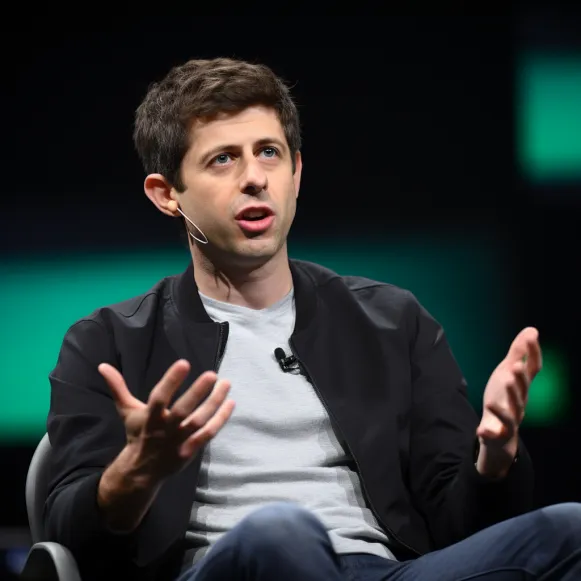The inside story of how FanDuel upended US sports betting with the same-game parlay and used it to dominate the market

- FanDuel nabbed an early market-share lead in US sports betting and has outflanked its rivals.
- It owes part of its success to the “same-game parlay,” a bet type that’s entranced the US market.
- This is the story of the team that built it and the strategy that made it a secret weapon.
FanDuel was preparing to launch a secret weapon as gambling companies competed for market share in the early days of legal sports betting in the United States in 2019.
The daily fantasy sports company, which had been acquired by European gambling giant Flutter Entertainment, was rushing to bring its “same-game parlay” to the United States.
No one had yet developed a method for combining bets on multiple events — a popular type of wager known as a parlay — within a single match. It would allow you to stack bets on which NFL team will win, the total score, and a specific player scoring a touchdown. To win, you must get all three correct.
Sportsbet, FanDuel’s Australian sister sportsbook, had cracked the code a few years before, and Flutter had expanded the bet-builder format to the United Kingdom and other markets.
FanDuel was eager to bring the technology to the United States in order to gain a competitive advantage.
The same-game parlay, a term coined by FanDuel, has since taken off, meshing well with the high-scoring, stat-driven, athlete-personality emphasis of US sports — and propelled FanDuel to the forefront of the betting market.
“It became the killer app,” said Scott Longley, editor of the gambling newsletter Earnings+More. “The same-game parlay was the right product in the right market at exactly the right time.”
“It was definitely a catalyst for FanDuel to grow its market share disproportionately at that time,” Conor Farren, FanDuel’s senior vice president of sports product and pricing, said.
FanDuel continues to be the market leader in online sports betting in the United States, though rival DraftKings has closed the gap in recent weeks. According to research firm Eilers and Krejcik Gaming, FanDuel captured 45% of gross gaming revenue in the 12 months ending June 2023, easily outpacing rival DraftKings’ 28%.
In a fiercely competitive industry, the product has also helped FanDuel’s bottom line. Because you are stacking odds against yourself, parlays are higher-risk, higher-reward bets. They result in higher operating margins for operators. Because of the product’s popularity, FanDuel claims to make about 50% more in gross gaming revenue per dollar wagered than its competitors.
Every sportsbook, from DraftKings to newcomer Fanatics, now offers or is developing a version of the same-game parlay. Entain, a BetMGM shareholder, recently acquired Angstrom, a pricing and analytics firm, in part to boost its same-game parlay product.
“In US sports betting, who wins with same-game parlays decides who wins the race,” wrote the Earnings+More gambling newsletter in March.
Insider spoke with top Flutter executives who brought the same-game parlay to FanDuel about how it was created and the strategy that propelled it to prominence in US sports betting.
The same-game parlay was built to solve a customer complaint
Longley described the betting product that would become a “must-have” in US sports betting as being born halfway around the world at a company called Sportsbet, two years before legal sports betting even began to spread in the US.
It was created in response to a common customer complaint.
“For years, customers would have complained about the fact that they couldn’t place a multi or a parlay within a game,” said John Maguire, who led the Sportsbet team that developed the “same-game” product.
For a year, a team of about 25 analysts, software engineers, and quants based in Melbourne, Australia, worked nonstop to solve the problem.
The biggest challenge, according to Maguire, who led the team, was pricing the bets accurately and quickly. Each event in a match has the potential to influence the outcome of another, and the relationship between two events isn’t always one-to-one. A wager on LeBron James scoring 30 points against the Houston Rockets, for example, would affect the odds of a Los Angeles Lakers win, and thus the price of such a parlay, differently than a wager on opponent Jalen Rose scoring 20 points.
Maguire’s team had to create models to determine how each potential outcome in a match would correlate to another, taking into account all of the nuances of the sport and team.
“That was really the challenge that we faced and also to do that at scale across numerous games and markets, literally into thousands and thousands of markets where you end up with millions of outcomes is quite the engineering problem,” he went on to say.
Sportsbet launched the first “same-game” product in 2016 with the Australian Football League, followed by Australian rugby and the NBA as organic user adoption ticked up.
“We started to realize that we had really caught something quite unique here and started to really double down on the investment,” Maguire said.
The same-game parlay set FanDuel apart
On the other side of the world, in May 2018, the United States Supreme Court issued a decision that paved the way for legal sports betting to take root in the country. A week later, Sportsbet’s parent company, then known as Paddy Power Betfair, agreed to buy the daily fantasy sports brand FanDuel.
Farren, who had previously served as Sportsbet’s head of risk and monetization, was one of several Flutter executives who joined FanDuel that year. He was tasked with developing the company’s trading, risk, and sports-modeling center. Farren and FanDuel’s product team were also eager to incorporate the same-game parlay into their arsenal.
They ran the risk of the same-game parlay not being the game-changer they hoped for, and the company squandering much-needed resources at a time when the industry was scrambling to navigate a new regulatory environment and launch in as many US states as possible. However, given the product’s success in Australia and other markets at the time, Farren stated that he had a “high conviction” that it would pay off.
“We had good reason to believe that it would work for a US audience,” Farren went on to say. “Then really it was a case of begging, borrowing, and stealing favors from tech-resourcing groups, because we did not have the people that were going to be able to enable this.”
In September 2019, FanDuel introduced the same-game parlay, first with the NFL and then with the NBA. By the fifth month of its availability, adoption had risen to about 5% of all online sports betting wagers on FanDuel.
When the pandemic halted live sports for a few months in 2020, FanDuel took another calculated risk: it regrouped its marketing team and made the same-game parlay the star of its ad campaigns, while other gambling companies poured money into brand marketing.
“We got some thinking time while we were waiting for the lights to come back on, because it was pretty hectic and busy back then,” Farren went on to say. “In a world where most sportsbooks at that time were really just advertising the brand to get the brand recognition, we went with the product message and we promoted it.”
According to Farren, the same-game parlay increased from 5% to 10% of FanDuel bets after the NBA resumed play in July 2020. It continued. According to the company, four out of every five active FanDuel customers placed a same-game parlay last year.
While nearly all of FanDuel’s competitors have their own versions of this bet type, FanDuel’s trademarked same-game parlay branding has stuck.
“It’s really just a parlay, right?” Farren stated. “However, it’s funny because when you hear anyone in the industry or a customer talk about it, they don’t talk about it as a parlay.” They refer to it as a’same-game parlay.'”
Flutter has also used cross-collaboration, which it refers to internally as the “Flutter Edge,” to improve the product by adding more sports, potential bets, and better odds and pricing.
In 2019, a small group of Flutter’s principal engineers, architects, and other thinkers huddled for a week in a hotel in the middle of England to devise a strategy for investing in in-house pricing platforms and models. It sparked a multi-year project that included FanDuel executives and resulted in the development of the same-game parlay for college basketball.
The strategy helped FanDuel conquer US sports betting
From the incumbents to Penn Entertainment’s upcoming ESPN Bet, US sportsbooks are racing to improve their parlay products in order to catch up to and surpass FanDuel. Product differentiation is critical in the next phase of the US gambling wars, according to industry leaders.
“Everybody else is looking at that and saying, ‘OK this is an arms race and we have to beat each other on product,'” said Longley. “What is the ESPN Bet test?” he continued. It will be determined whether or not their parlay product can compete with market leaders.”
FanDuel, for its part, has continued to improve the product in order to provide more flexibility and choice. It is now available for most major US sports, with the company claiming that it offers up to 1 trillion potential bet combinations on a single game. It introduced the Same Game Parlay+, which combines multiple bets from the same game with additional bets from other games in a single parlay.
FanDuel’s profit margin has also increased. According to the company, it accounted for 12.2% of online gross revenue in the first half of 2023, compared to 8.1% in the rest of the market. The expansion comes as parent company Flutter, which is publicly traded in the United Kingdom, prepares to list in the United States in the coming months.
The company is looking for the next big product breakthrough. In-play betting, according to Maguire, is ripe for innovation, as is the potential for promoting bets tied to key moments in live sports. It’s experimenting with a new product called Pulse, which curates a live NBA feed and populates new potential bets based on what’s going on in the game.
“Surfacing that to you as a customer in a way that’s easy for you then to make a choice around whether you want to bet or not is going to be really, really important,” he said.
However, game-changing innovations do not happen every day.
“It was the last great watershed innovation in the industry,” Farren says of the same-game parlay. “Before that you’re probably going back to live betting — so these things don’t come along very often.”





